Now I know that there is a fairly large group of people in the US who will quickly insist that they would never own a Toyota Prius. Some of them have no interest in a vehicle that offers as little performance as the industry’s bestselling hybrid while others are quite turned off by the look of the form-follows-function exterior design. The third group doesn’t reject the idea of hybrids so much as they don’t want a hybrid that looks like a hybrid, so it isn’t so much about the striking face of the Prius lineup as much as it is about the shape of the Prius lineup.
I was talking to a friend the other day who falls into that third group – he isn’t opposed to hybrids, but he doesn’t like the exterior styling of the Toyota Prius and in the case of the Prius C, his exact comment was “why would someone drive a Prius with even less space, considering that is one of their selling points.”
Well, now that I have had the chance to log a few hundred miles on the Toyota Prius C – after having previous driven the Prius and the larger Prius V – I understand why people who are concerned about cutting down their fuel costs like the Prius lineup. Also, for those who don’t need the space, who want better fuel economy and who want a car that is a little more exciting to drive, the Prius C is a remarkable choice.
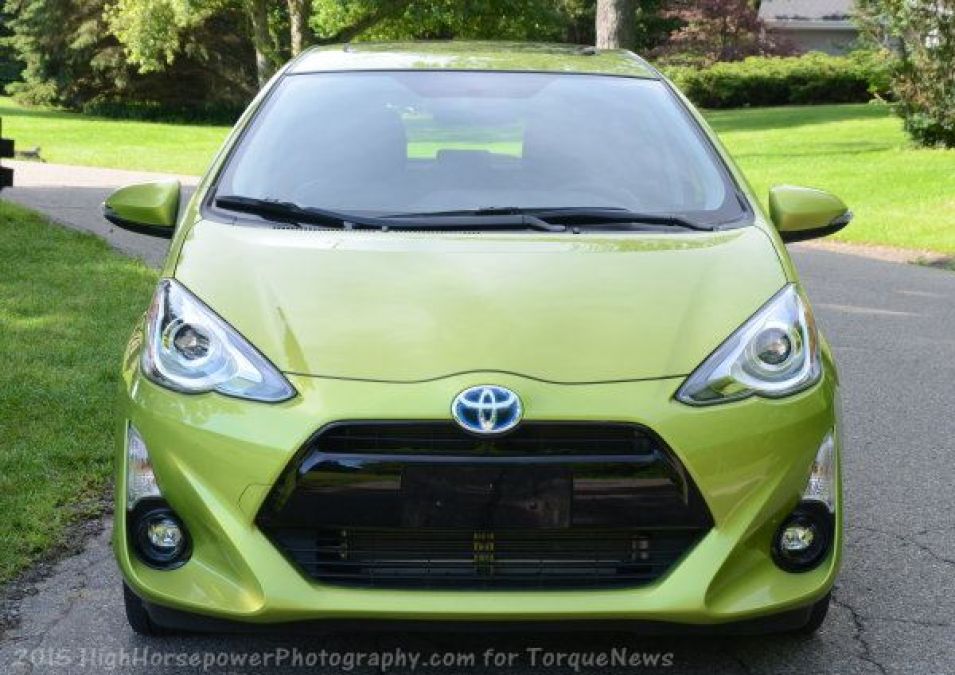
Again, while I don’t expect the owners of the Mustang, Corvette, Viper or other performance cars to trade in their powerful V8s for the Prius C, there is no denying the demand for hybrids in the US and when it comes to buying a compact hybrid, the Prius C might just be the best option on the market.
The Interior
The Toyota Prius C is the smallest of the popular hybrid lineup, but the interior was clearly designed with maximum passenger space being a top priority. While the rear seating area is smaller than that of the traditional Prius, the smaller “C” model still offers plenty of space for two adults. When the front seats were adjusted to comfortably accommodate two 6 foot tall adults, those same two people were able to fit comfortably in the outboard rear seats. Would I expect those same 4 adults to cruise from Detroit t Vegas in the Prius C? No, but on the average drive around town, the smallest Prius can easily seat four adults. Also, the rear cargo area of the Prius C is downsized, it is still large enough to fit a full sized hockey bag and if you fold down the rear seats, the available cargo space is very impressive for such a tiny car.
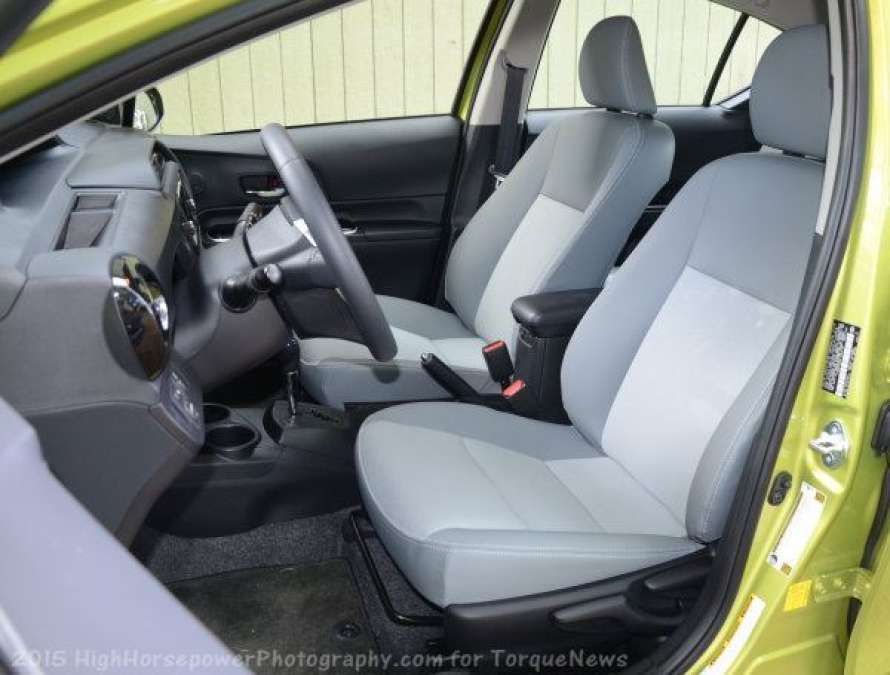
In terms of interior amenities, the Toyota Prius C has a very minimalistic look in order to maximize seating space, but the designers have managed to jam a great deal of content into the small center stack. The touch screen is located in an area that makes it very easy to use for the driver, with the sound system, the navigation system, the hands free phone system and the Toyota Apps suite. Unfortunately, still no dedicated map or navigation button, but the system is very user friendly once you are familiar with the menus. The steering wheel has a few buttons for the sound system and the voice control system, while the other buttons control the high-mounted driver’s information center. Like the larger Prius, the Prius C has the long, flat information panel mounted in the top-middle of the dash and in addition to the basics like the speedometer and the fuel gauge, there is an information screen with a variety of different hybrid-related readouts.
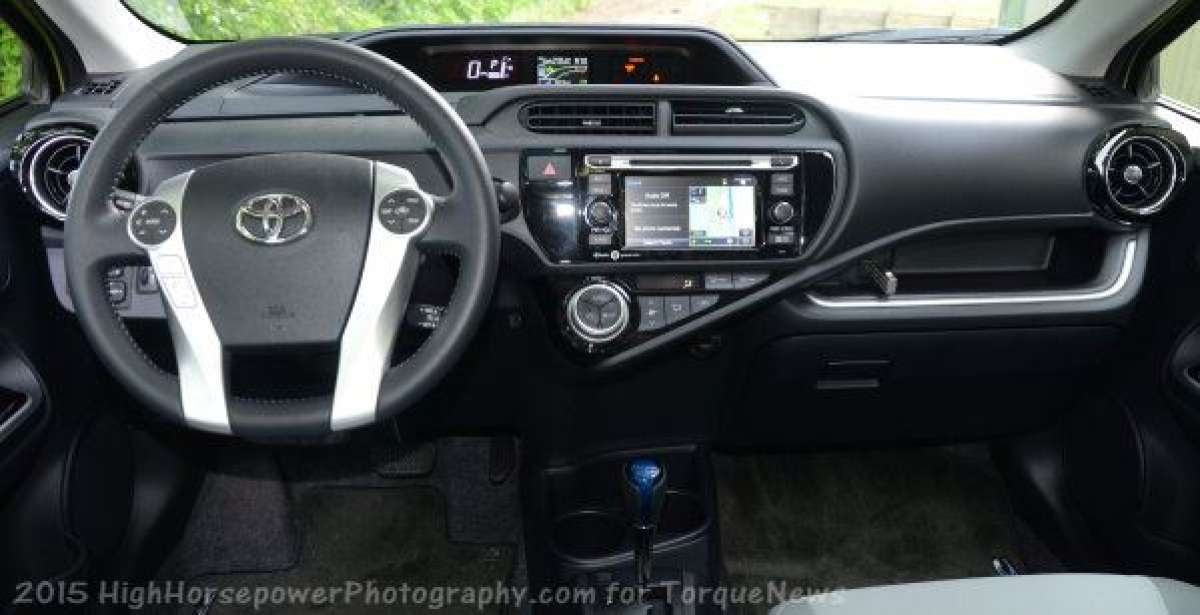
Really, the infotainment system of the Toyota Prius C doesn’t leave you wanting for much, so while it might not be the flashiest system on the market – it is just as comprehensive as any other system in the US market and you do get some high end features such as push-button start and a smart key access system. Best of all, in being fairly minimalistic, it is incredibly user friendly.
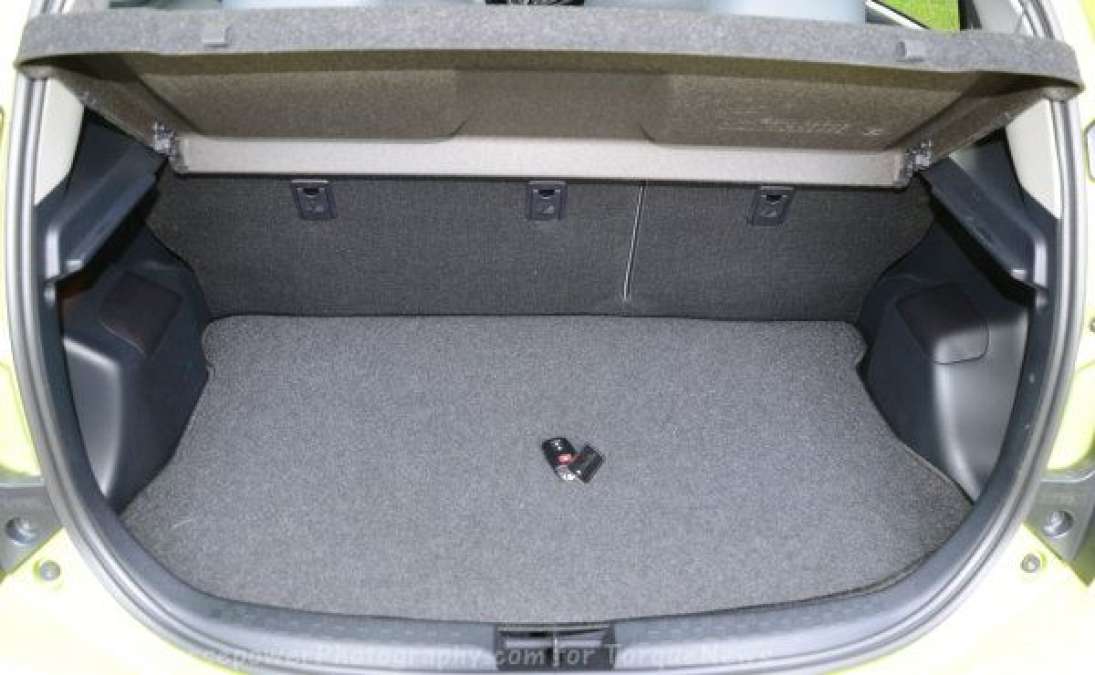
The Drive
The Toyota Prius C is powered by a Hybrid Synergy Drive system featuring a 1.5L 4-cylinder engine that delivers 73 horsepower and 82lb-ft of torque to the front wheels via a continuously variable transmission with the electric drive system adding another 25.9 horsepower for about 99 total system horsepower. As you can imagine, with less than a hundred horsepower, the Prius C is not going to satisfy your need for speed, but for a car that only has 99 horsepower, it gets up to speed as quickly as most hybrid owners will ever expect. Honestly, it is quicker than I expected when launching from a stop and accelerating wide open – something which I suspect that most Prius C owners do very rarely. Critics of the hybrid segment will insist that they are impossible to drive in fast moving traffic or when you need to accelerate with normal traffic, but none of that is true. Even in Detroit highway traffic that is often moving well north of 70 miles per hour, the Prius C had no issues keeping pace with everything else on the road. Putting it into the available Eco mode will improve fuel economy, but it dampens throttle response enough that I only really used it when cruising on the highway.
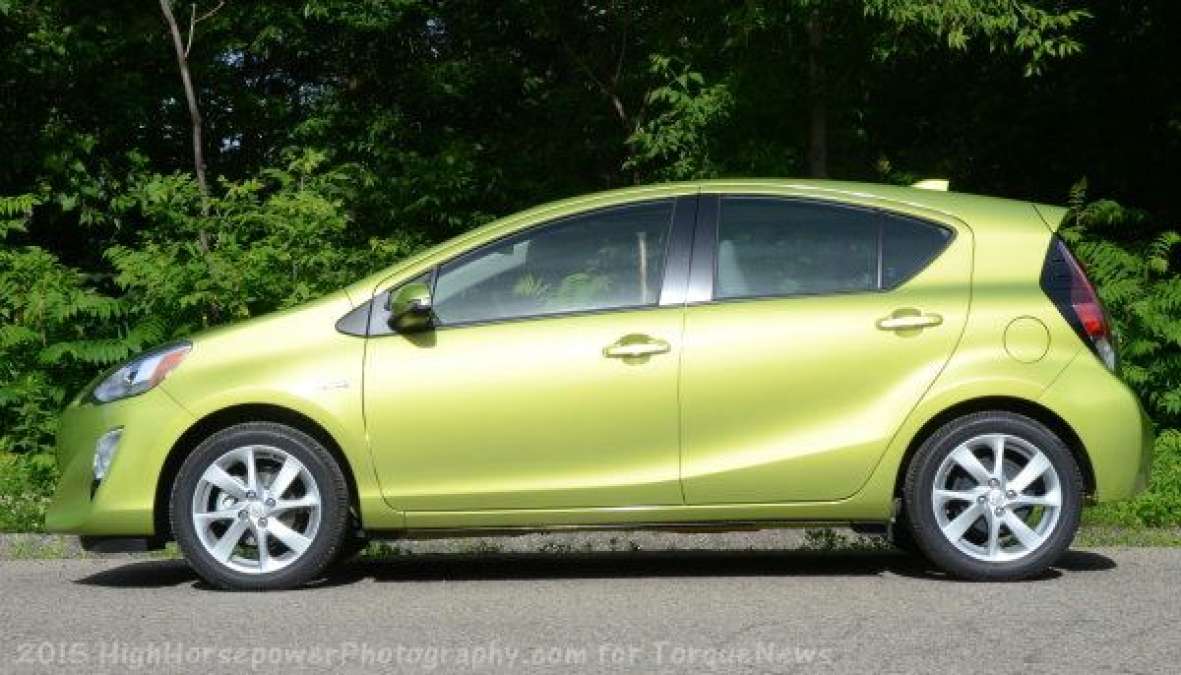
Most importantly, the Prius C gets very, very good fuel economy. Under very normal driving situations around town, I had no problem hitting the expected 53 miles per gallon, especially in any sort of traffic during which I was using the EV mode to creep along. In fact, the combined EPA number of 50mpg proved to be very realistic, if not low. I was able to drive normally and hit 50mpg combined, but when I tried to get better fuel economy around town – while still moving with traffic at the speed limited – I was able to get better than 56mpg over the course of a few hours of small town driving.
When I got out onto the highway, the fuel economy does drop a bit, especially when I was running with the fast-moving Detroit traffic, but it only dropped to a bit under 50mpg, allowing me to still comfortably average over 50mpg during the majority of my testing time with the Prius C.
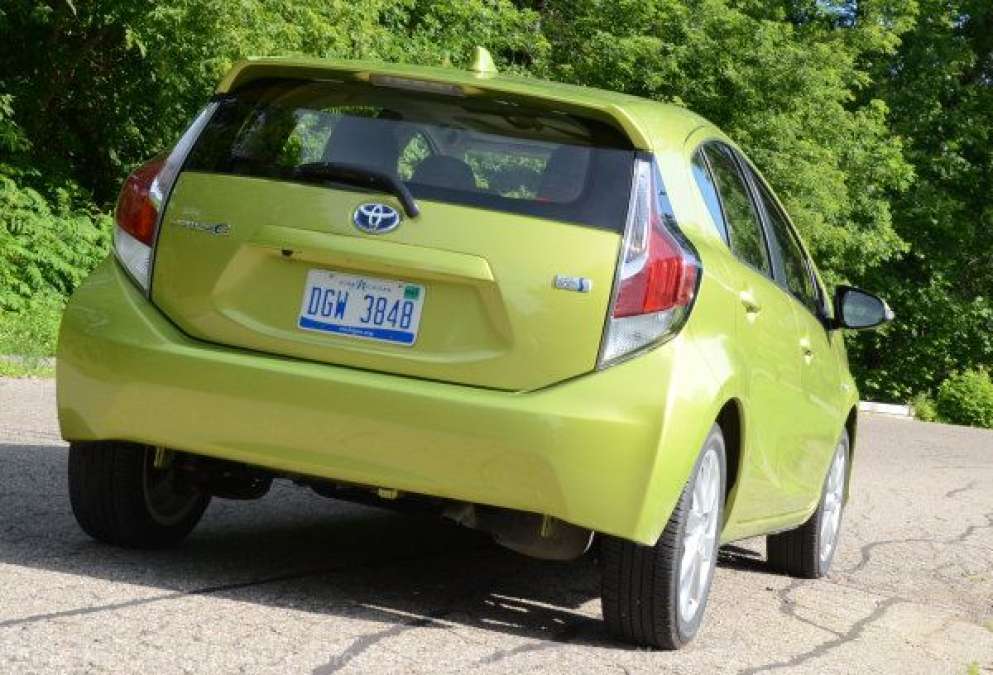
When I was I college, I spent some time driving a Geo Tracker which was truly so underpowered that it couldn’t keep up with traffic. When traveling at 75mph, I knew that a steep hill on the highway would cause the vehicle to lose speed similar to an overloaded tractor trailer and many people think that must be the case with the tiny Prius C, but I can assure you that this car moves along as well as any super-efficient subcompact sold in the US.
The Final Word
The Toyota Prius C isn’t a race car and it isn’t made to go fast, but it will cruise well above any posted speed limit in Detroit when the need arises. However, what it does is offer incredible fuel economy in a compact package, so for those folks who want the hybrid technology of the Prius, but who want it in a smaller, less expensive form – the Prius C is ideal. This car has navigation, heated leather seats, real room for four adults with added space for cargo, the ability to comfortably keep up with even fast-moving traffic and the very real ability to average better than 50 miles per gallon…all for under $26,000.
You can buy a great many compact 5-door hatchbacks in the US right now for a comparable sticker price to that of my $25,600 Prius C Four test vehicle, but none offer the combination of fuel economy, drivability, passenger space and interior gadgetry for that low price and that, my friends, is why people buy the Toyota Prius. It isn’t only because it is one of the most efficient vehicle lineups sold in America – it is because in addition to being one of the most efficient cars sold in America, it has all sorts of features that you want from a true commuter car or family runabout and it checks all of these boxes for just $25,600 fully loaded.
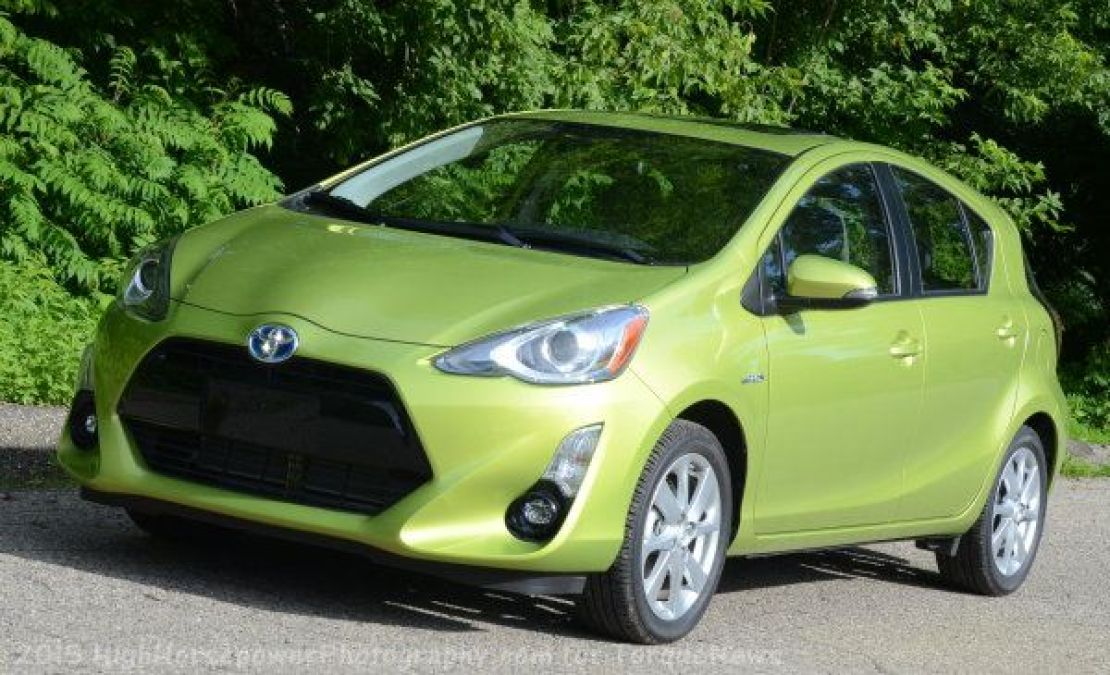
When it comes to buying a hybrid based on price and fuel economy capabilities, the Prius C is the best choice on the market, but the fact that Toyota was able to pack so much into this car and maintain tons of passenger space is why these cars are selling so well. While many of my regular readers would never consider trading in their V8-powered pickups or muscle cars just for better fuel economy, there are millions of people in this country who spend their mornings and afternoons stuck in traffic, watching their money burn away as their engines idle and for those folks – cars like the Prius C are a way to minimize their losses without compromising on comforts.












Comments
I couldn't agree more. We
Permalink
I couldn't agree more. We took a bare-bones rental model on a 2200-mile road trip from Boston to Greenville, SC. The car was packed with luggage and some Christmas gifts in the hatch, while our dog took up the whole back seat. It was a tight squeeze for the luggage, but not for us. I was only wanting for an armrest--but again, this was a Hertz stripper; if I were buying it, I'd go for a more loaded model.
Our trip included everything from open highway driving at 75-80 mph, runs up the mountains in VA and W. VA, a little snow on the roads, stop-and-go-traffic, you name it--the C acquitted itself very well in all circumstances at about 45 mpg average. That's with a totally packed car driven by someone who prefers the performance of a german sports sedan.
I got 89.2 mpg driving home
Permalink
I got 89.2 mpg driving home from church the other day without even thinking abour it, in urban traffic. Normally my commute to work takes about 54 mpg.